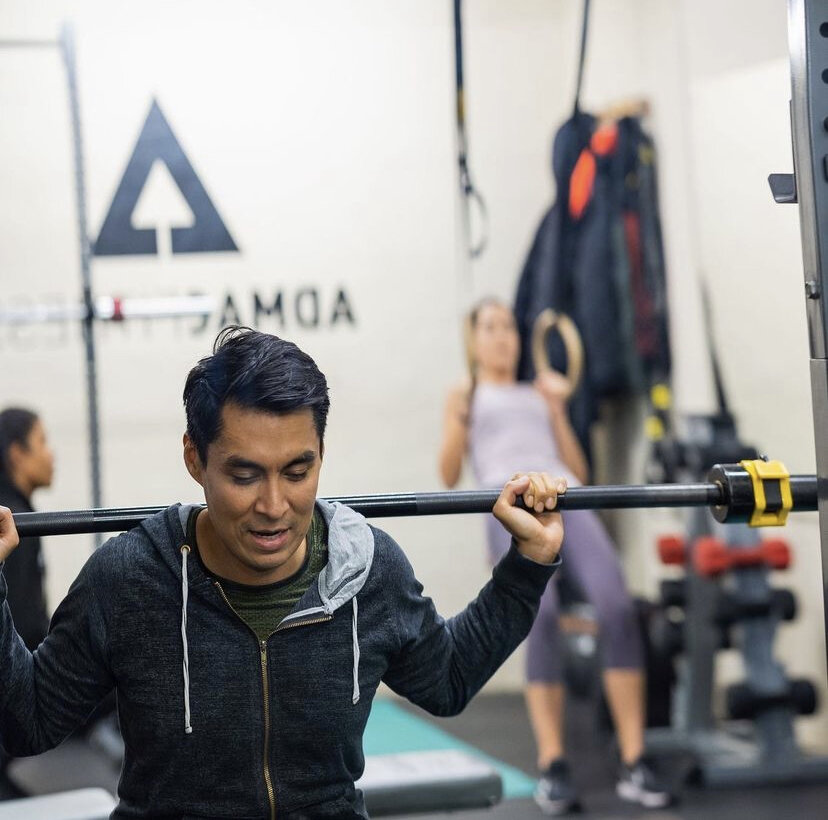One of the most common problems we see as personal trainers is the complete lack of flexibility and mobility most people have when they first come to see us. A lot of us spend a huge chunk of our lives sat down, and the impact this has on our flexibility (and general health and fitness) is dramatic.
You may not think you spend that much time sat down, but think about your day for a second…
We sit down to eat breakfast
If we drive/get the bus/train/tube to work, we’re sat down
If we work at a desk, we’ll be say down
We’re sat down to eat lunch
We’re sat down on the commute home
We’re sat on the sofa
We’re sat as we eat our evening meal
Now that may not apply to all of you reading this, but it’ll certainly be applicable to a lot of people. It might not seem like a big deal, but the issues that a lack of mobility causes aren’t immediately apparent - they come on over time and they get worse.
A lot of bad backs, hip issues, knee, shoulder, ankle and wrist issues stem from poor flexibility at one area or another. If the lack of mobility is allowed to get worse, it can cause much more severe issues in old age where movement is already compromised.
What Research Shows About Flexibility
There’s conflicting research about flexibility, but we know without question that flexibility and stretching exercises are prescribed by physiotherapists as a way to improve muscle and joint mobility, which reduces pain and enhances movement quality.
This is backed up in a lot of research that has been conducted over the years.
Interestingly, we don’t just have to perform stretching exercises to improve our mobility and flexibility. In this study, it shows that by performing strength training exercises to full range you can increase flexibility and enhance range of movement.
Whilst this has been known anecdotally in strength training circles for a while, it shows a wider audience that actually you don’t have to spend weeks doing yoga to improve flexibility, you can strength train too! (Although as shown in research, yoga is very effective at improving flexibility too!)
There’s also evidence that shows in high impact sports, or sports that will involve lots of high intensity sprints, twists, turns etc, that a stretching protocol will help to prevent injuries. This is because the muscles and tendons will become more flexible and compliant with movement, reducing the injury risk. It’s important to note however that if you’re not doing these sports then there’s no discernible benefit to a stretching practice from an injury prevention point of view.
Benefits of Improving Flexibility
Irrespective of what the research says, there’s no doubting the anecdotal evidence that improved flexibility makes you feel better. Feeling stiff and tight isn’t good, but the feeling of movement and freedom you get having gone through a thorough stretching session is great.
Where the scientific debate around when and how stretching is best applied, one thing is for certain and that’s that regular stretching is an effective way to retain long term full range of motion and that’s an important aspect of joint health and maintenance of movement quality. As we’ve discussed in the article, you don’t need to be heading down to the yoga studio every day to reach spiritual Nirvana, but thoroughly stretching post workout a couple of times a week should be sufficient to help keep your joints moving and your movement quality good.
How Flexibility Enhances Exercise Quality
There’s a direct correlation between movement quality and the effectiveness of an exercise. This comes down to a couple of main factors…
Better flexibility improves the range of motion that you have so you can perform exercise with better technique. This makes an exercise much safer and controlled.
A bigger range of motion allows you to increase the time under tension, which research shows is an effective way to improve strength and muscle size.
The research also shows that training with a full range of motion can lead to greater strength gains, so improving your flexibility may lay the groundwork for you getting stronger. In fact, if you’re struggling to improve your strength numbers it may well be worthwhile investigating whether or not your flexibility is holding you back by limiting your range of movement.
In all honesty, no matter what your training goals are it makes sense to optimise all areas of your health and fitness. Flexibility is a key part of that.
By improving flexibility you can impact a lot of other aspects of your fitness and movement quality, which will reduce injury, improve sporting technique and enhance your overall athleticism. For the sake of 15-20 minutes 2-3 times per week, you can make significant physical gains that will have a disproportionate impact on the rest of your being.
If you’re looking for personal training in East London, get in touch!
At AdMac Fitness we’re not about fads, fashions and short term fixes. We want you to succeed properly over the long term, so with our help and advice you can get your fitness back on track! If you’d like us to help you, contact us on 07921465108 or email us at admacfitness@gmail.com. We look forward to hearing from you!


